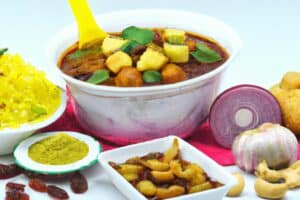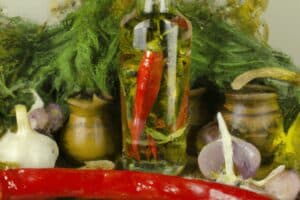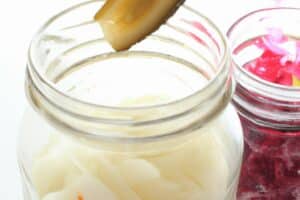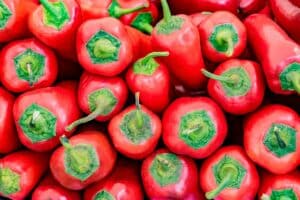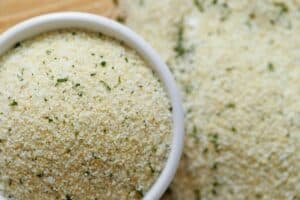If you’re looking for an Old Bay Seasoning substitute that isn’t merely acceptable but exceptional, you can’t do better than Crab Boil seasoning, which has a nearly indistinguishable flavor profile and is used for the same general purpose.
That’s just one option, though. You have plenty of others, and any of them would make a welcome addition to a summer seafood salad, steaming platter of corn on the cob, or quick and dirty Po’Boy.
It’s a long list of herbs and spices that gives Old Bay Seasoning its unique flavor: celery salt, black pepper, crushed red pepper flakes, mustard, and paprika, just to name a few (parent company McCormick claims a total of 18 mouthwatering components).
Each of the alternatives highlighted here features most of the same key ingredients as Old Bay and will therefore make a satisfactory stand-in for the O.G.
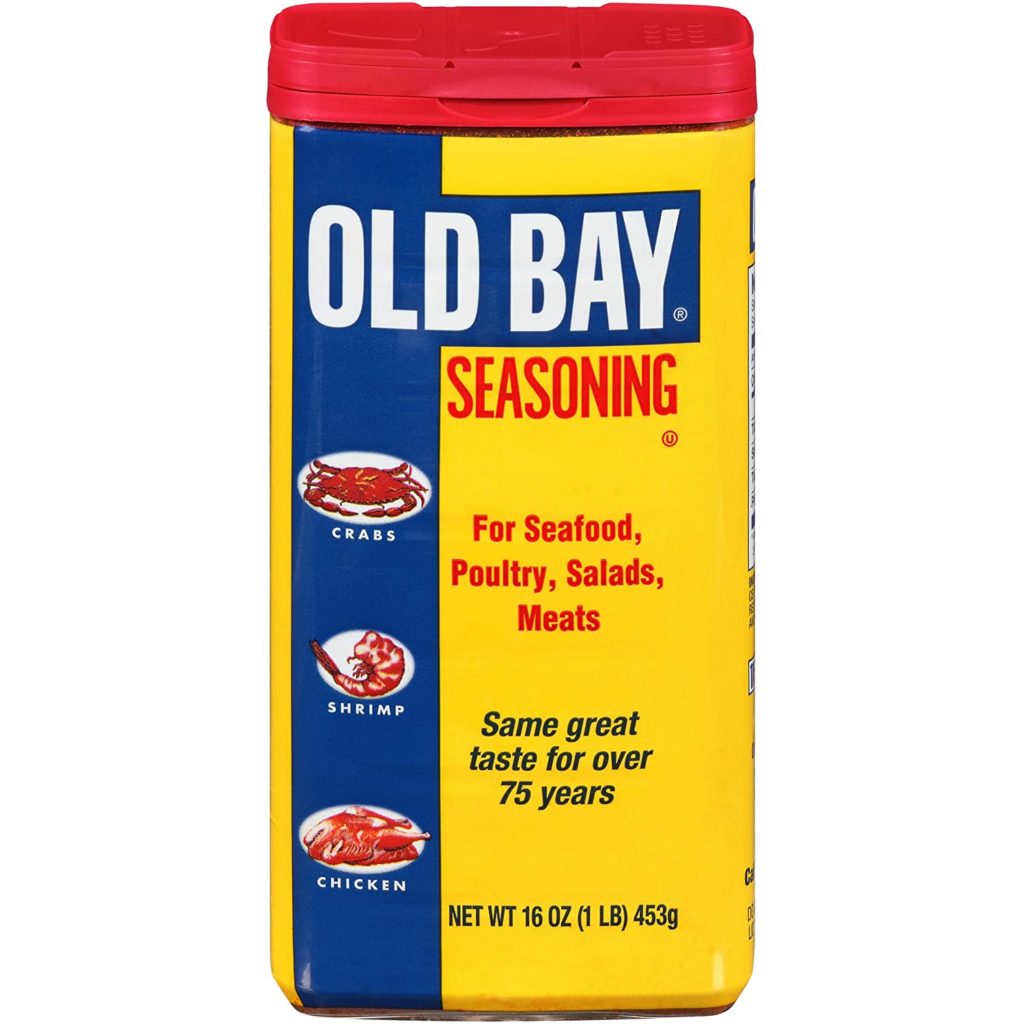
Recommended Old Bay Seasoning Substitute
1. Crab Boil Seasoning
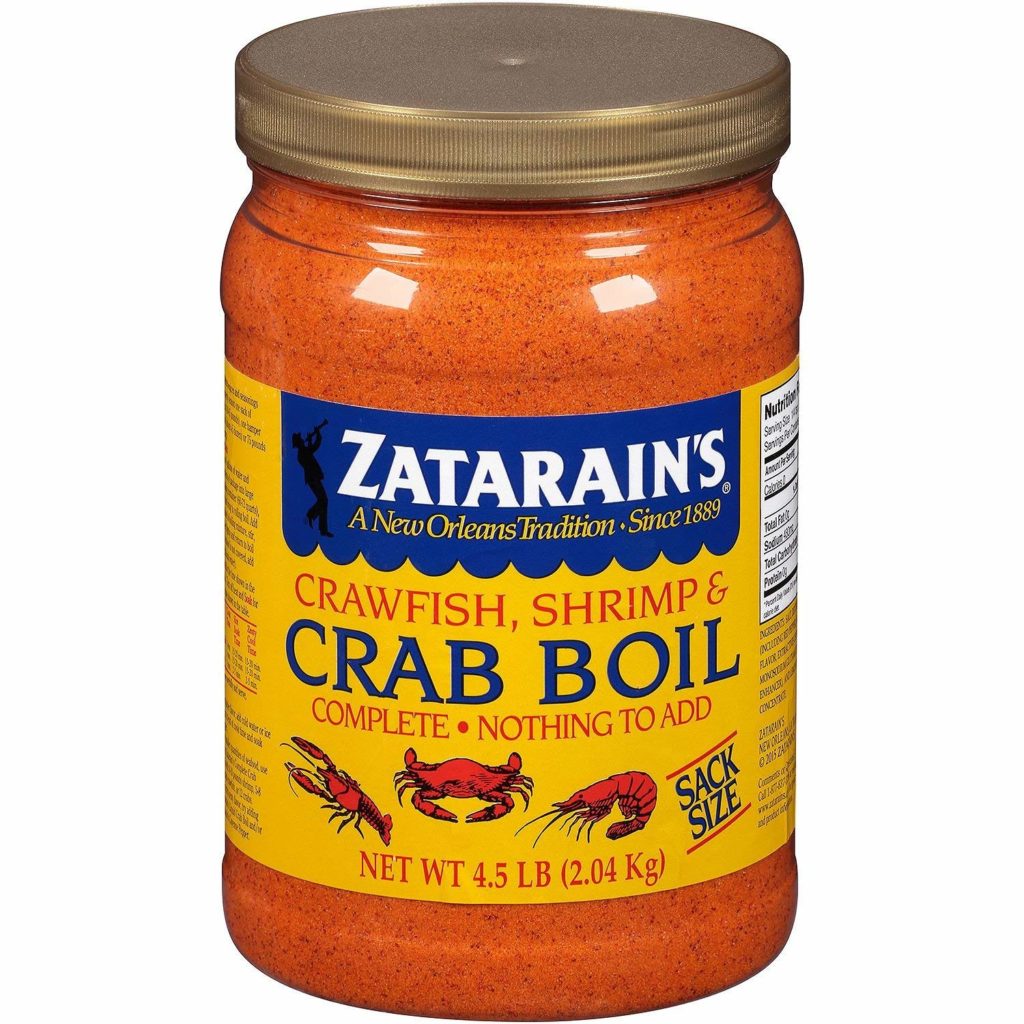
Of all the Old Bay Seasoning substitutes on this list, Crab Boil seasoning is without a doubt the closest available analog to the real deal.
This ubiquitous boiling water flavoring has a makeup that’s 90% identical to that of Old Bay (possibly more, depending on the brand you go with), with salt, red pepper, mustard, nutmeg, allspice, cloves, and cardamom listed among its primary ingredients.
That degree of similarity isn’t a coincidence, either – like Old Bay, Crab Boil seasoning is frequently used to jazz up fresh catch and its accompanying items. In fact, it’s often packaged right along with crab legs or whole shrimp in handy-dandy seafood starter kits.
Because there’s so much overlap between the two mixtures, you can keep things simple and swap out Crab Boil for Old Bay at a 1:1 ratio.
2. Cajun Seasoning
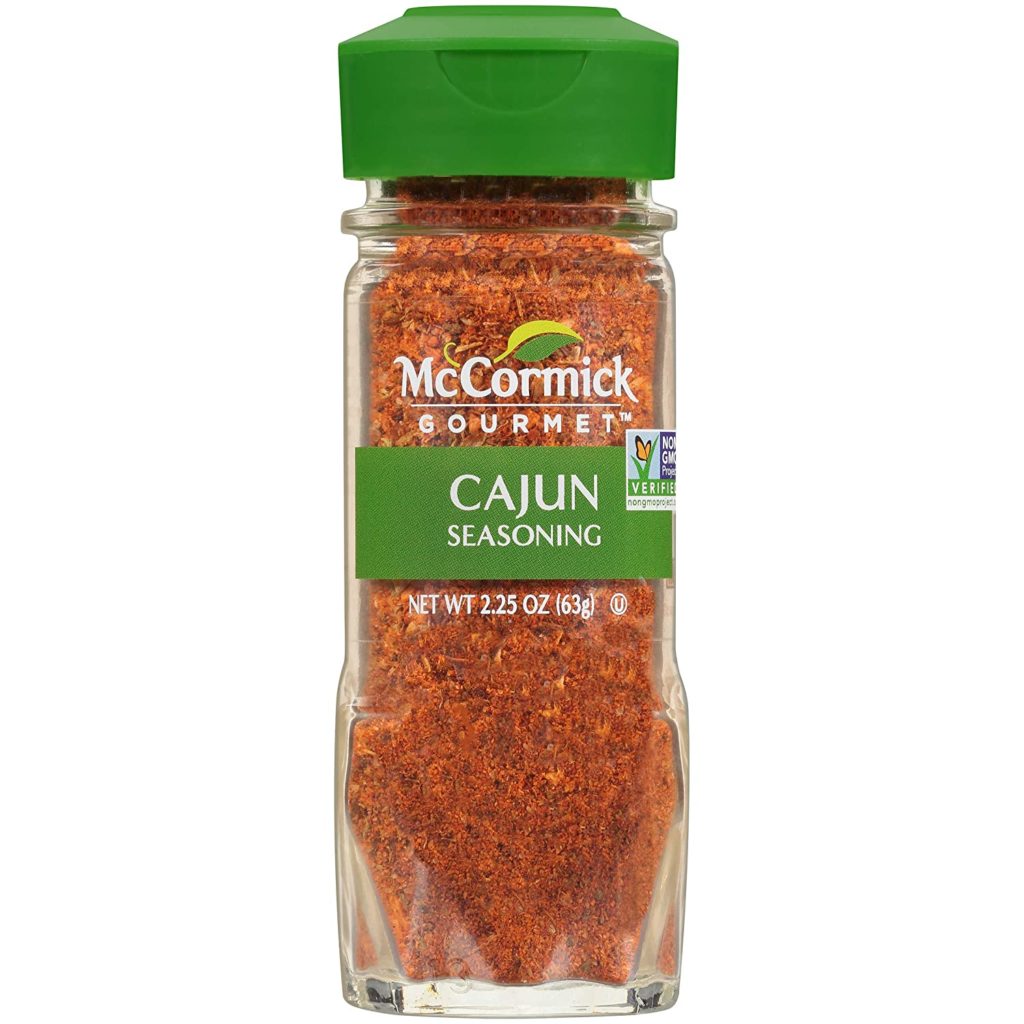
If you’re not intimately acquainted with Cajun seasoning by now, you haven’t truly lived. Cajun seasoning is a wonderous all-purpose additive that has the rare gift of improving the taste of just about everything you could think to put it on without altering its basic character.
The majority of Cajun-themed seasonings consist of salt, black pepper, red pepper, garlic powder, and chili powder. It’s a little saltier than Old Bay and has a little more kick, as well, so you’d be well-advised to cut back your proportions to about two-thirds of what the recipe you’re following calls for.
It also has one major advantage over Crab Boil seasoning, which is that it’s in high supply everywhere you go. You have almost zero chance of finding a food store that doesn’t carry some variety of cajun seasoning.
3. Pickling Spice
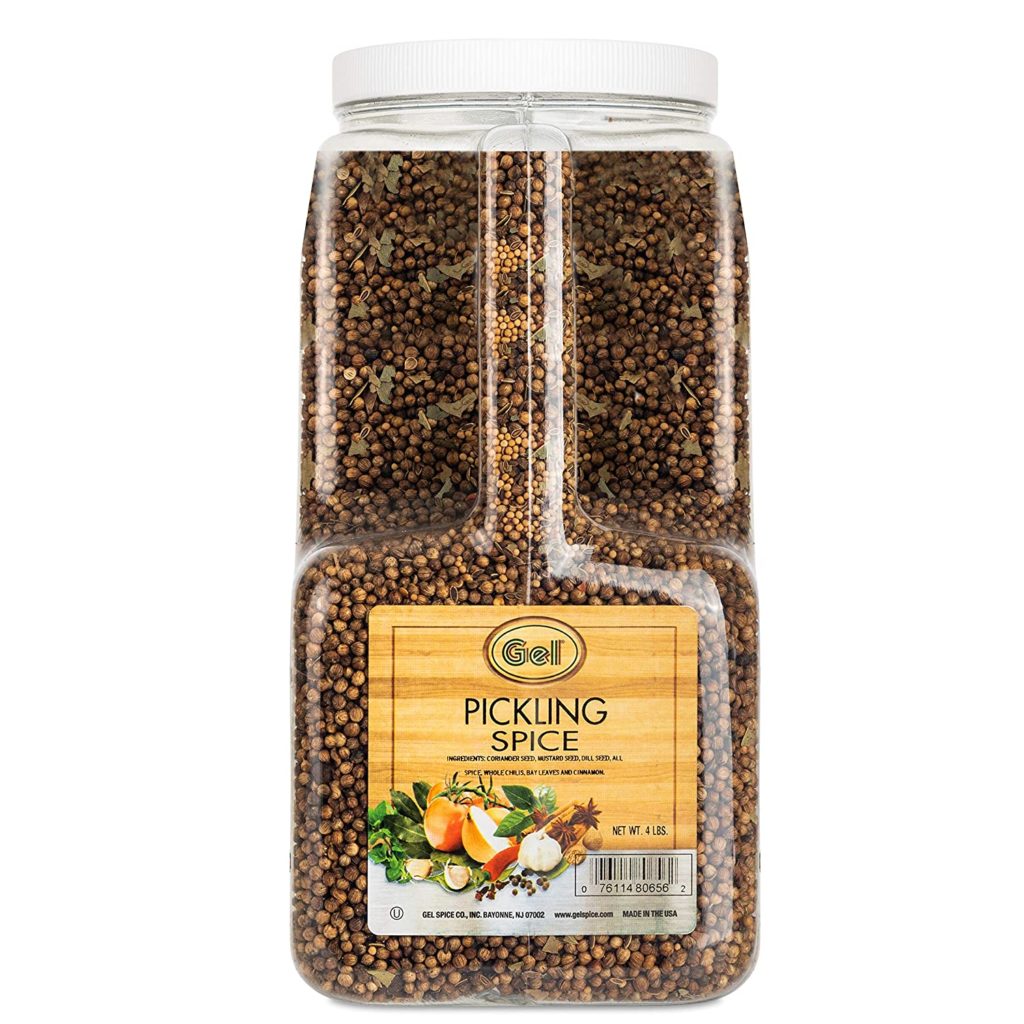
If you think pickling spice is just for making pickles, think again. This versatile mixture is well-suited for a wide range of potential applications, including putting the finishing touches on a pan-fried snapper or making New England-style popcorn.
Here again, you’re looking at a lot of the same core constituents – red pepper flakes, mustard seed, cloves, allspice, coriander, bay leaves, and so forth – meaning you’re going to end up with a flavor profile much like that of Old Bay.
That said, just as Cajun seasoning leans slightly towards heat, pickling spice leans slightly toward sweet. Feel free to use the same amount of pickling spice as you would Old Bay. Keep in mind, however, that you may also want to work in some celery salt, black pepper, cayenne pepper if you like your seafood with a healthy amount of zing.
4. Chinese Five Spice
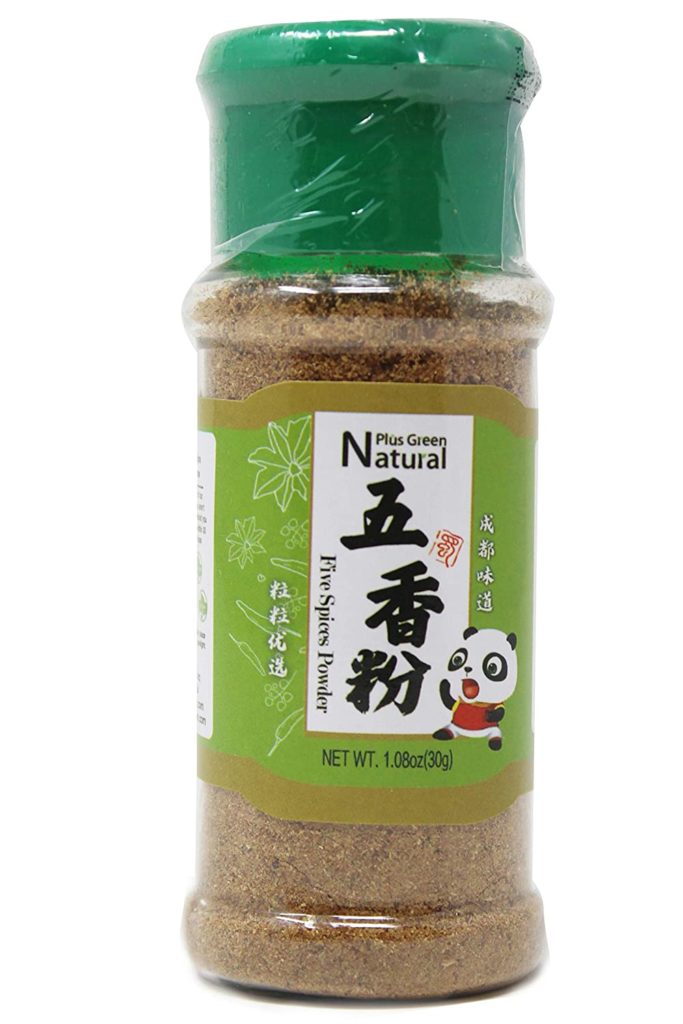
Surprised to see Chinese Five Spice on a list of? Don’t be. Pound-for-pound, it’s one of the most complete seasoning solutions ever invented. As such, it makes an ideal substitute for Old Bay Seasoning.
All the major flavor divisions are represented in this stripped-down assembly of essences: warm cinnamon, musky fennel seed, sweet cloves, and pungent star anise. The wild-card fifth spice can vary depending on who’s doing the mixing, but it usually comes down to Szechuan peppercorns or white pepper to round things out with the necessary spicy, savory counterbalance.
As you can imagine, those make a pretty potent combination. Your best bet is to stay on the conservative side and use roughly two-thirds to three-quarters the amount of Five Spice for the prescribed quantity of Old Bay. We guarantee you won’t mind the change of pace.
5. Seasoned Salt
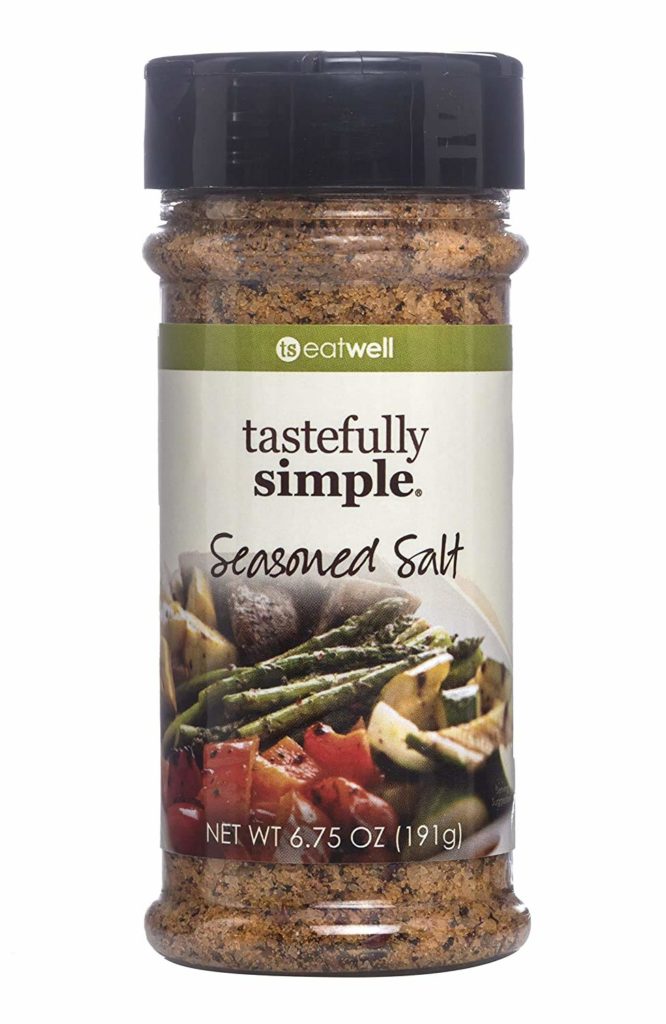
Our final Old Bay substitute is the “clutch” option that you’ll find yourself reaching for if you don’t have anything else on hand and the shelves at your local supermarket have been ransacked during the weekend rush.
The biggest strike against seasoned salt is that there are so many different kinds out there, and some are significantly better than others. Compared to Old Bay, Crab Boil, Cajun seasoning, or pickling spice, lackluster brands of seasoned salt tend to come up short in terms of complexity and depth of flavor. Regardless, it beats settling for plain old salt and pepper.
If you have the luxury of being choosy, look for a seasoned salt that packs power-players like celery salt, paprika, garlic powder, onion powder, and sugar for that all-important hint of sweetness. It’s not a perfect equivalent, but a few pinches will certainly do in a pinch.
Frequently Asked Questions
With so much mysterious goodness crammed into one can, Old Bay Seasoning has a way of stimulating curiosity. Here are answers to some of the most common questions about the legendary spice blend and its ingredients and wealth of uses.
Manufacturer McCormick keeps their proprietary Old Bay Seasoning recipe tightly under wraps.
The official ingredients list mentions only salt, celery seed, black pepper, red pepper, and paprika, with the remaining falling under the decidedly ambiguous heading of “spices.”
Not to be deterred, some enterprising culinary aficionados have managed to suss out some of the other contributing flavors, which include mustard seed, white pepper, cardamom, ginger, cloves, allspice, nutmeg, mace, and bay leaves. Alas, the precise elements and proportions will remain a mystery – at least for now.
It’s hard to describe Old Bay Seasoning’s signature flavor with any kind of accuracy, but suffice it to say that it’s salty, spicy, smoky, aromatic, pungent, and just a wee bit sweet. In other words, it has something to offer even the pickiest set of taste buds.
It’s so beloved that diehard users have been known to enjoy it in some pretty unorthodox ways, such as sprinkling it on watermelon, stirring it into homemade guacamole, spiking boiled peanuts with it, and serving it around the rims of Bloody Marys.
Not quite.
The two have quite a few ingredients in common, but whereas Cajun seasoning favors bold, zesty notes like cayenne pepper, garlic powder, and oregano, Old Bay sits on the sweet side of the spectrum.
Fragrant standouts like cloves, nutmeg, and allspice set it apart from everything else in the spice aisle.
Subtle differences notwithstanding, fans of all things spicy may prefer the tongue-tingling intensity of a hardy Cajun or Creole seasoning.
A better question would be, “What can’t you use Old Bay Seasoning for?”
When Old Bay’s was invented way back in 1939, it was intended to serve as a convenient shake-on flavor enhancer for seafood, particularly shrimp and crab. Since then, it’s accumulated an astounding array of auxiliary uses, enough to practically make your head spin.
Old Bay Seasoning routinely makes appearances in recipes for soups, stews, dips, spreads, snacks, sauces, marinades, doughs, batters, and even beverages.
Those with food allergies, dietary restrictions, and picky palettes will be pleased to learn that there is no MSG whatsoever in Old Bay Seasoning.
The only thing you may need to be wary of is the salt content, which may threaten to put you out of bounds if you’re on a special diet or are trying to watch your sodium intake. Assuming that’s the case, we recommend reducing the amount of seasoning you use somewhat and avoiding adding extra salt to your finished dishes.
Aside from that, Old Bay is calorie-free, gluten-free, keto-friendly, and kosher, on top of being totally delicious. What more could you ask for?
More Herbs & Spices Substitutes:

